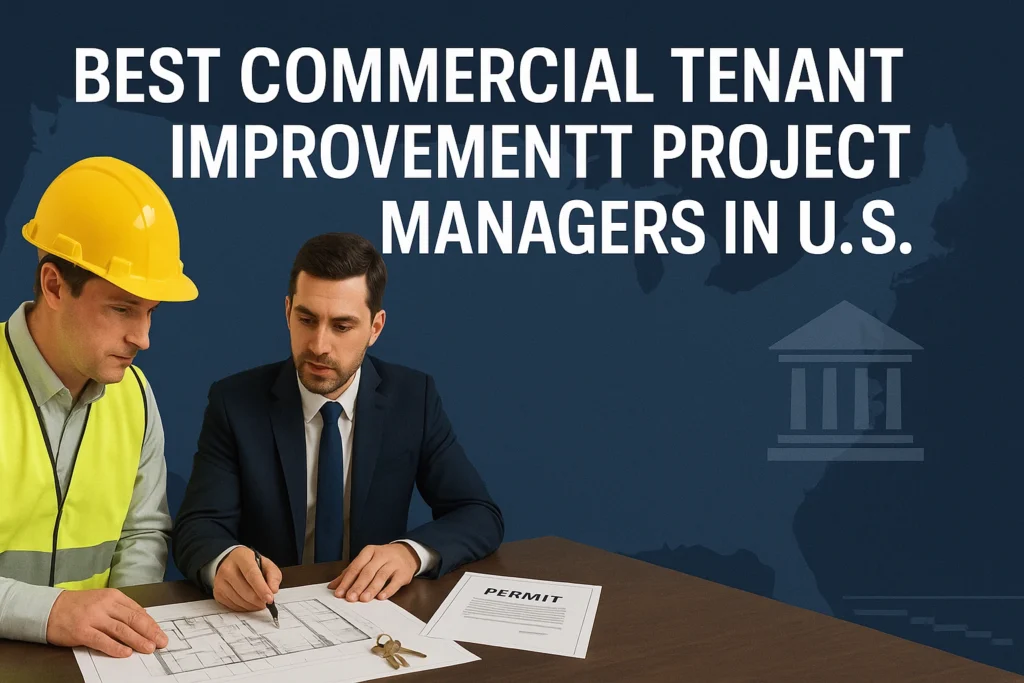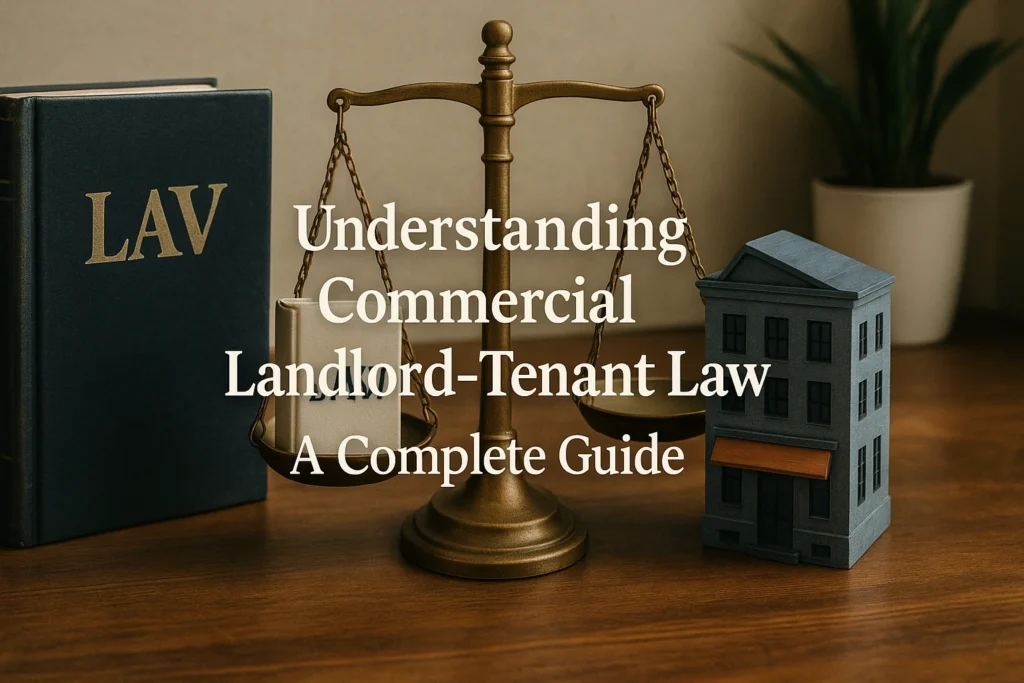Tenant improvement work in a commercial space needs skill, order, and strict cost control. A good manager gives that order. The right person turns a raw suite into a safe, code-compliant, and on-brand workplace. Bad choices lead to delays, cost spikes, and disputes.
U.S. cities use different codes and permit steps. A manager who knows local rules moves faster and avoids repeat reviews. Local contacts at plan desks and inspection units also help. That access saves weeks and real money.
Tenants want a space that fits the lease, the budget, and the target move-in date. Owners want quiet operations, safe work, and a strong asset. The best project managers balance both goals. The result is a smooth handoff and a space that starts work on day one.
What a Tenant Improvement Project Manager Does
A project manager leads the team from scope to closeout. Tasks cover scope control, budget control, schedule control, and quality control. The manager sets goals, coordinates design and trade work, and keeps each party on task. Clear records prove each step and avoid disputes.
The manager acts as the tenant’s agent. That means vendor selection, contract terms, and pay flow must serve the tenant’s goals. The manager must also keep the landlord in the loop under the lease. Good notes and a calm tone keep trust on all sides.
A strong manager owns risk before it erupts. That person spots gaps in drawings, permit notes, or long-lead items. Fixes go into the plan early. Small steps at the start save months at the end.
Traits of the Best Project Managers
Top managers show grit and calm control. The tone stays steady in high stress. Calls and emails get quick, clear answers. Tough news goes out fast and in plain words.
Deep code knowledge separates a good manager from the rest. Life safety, ADA access, energy rules, and fire code drive most office and retail work. A manager who knows these rules can steer design and avoid painful change orders.
Vendor respect matters. Trades show up and do clean work for leaders who act fair and pay on time. That culture starts at the top. A manager who sets that tone protects budget, schedule, and quality on every job.
How to Vet Candidates
Ask about three U.S. projects of the same size and use. A 5,000-sf office in a Class A tower differs from a 40,000-sf clinic on a pad site. You want proof in the same lane. Confirm city, year, and outcome.
Request a draft schedule and a cash flow curve based on your scope. Strong candidates do not guess. They build a plan that shows long-lead items, permit gates, and critical path. That plan shows how the person thinks.
Check insurance, license status, and any claims history. Many states keep public records on license discipline. Court dockets can also show past disputes. Clean records give confidence that the manager runs a tight shop.
Scope and Deliverables That Define Success
A clear scope leads to a clean job. The manager turns your program into a scope book. The book lists rooms, head count, finishes, and base-building tie-ins. The book also sets power needs, data needs, and any special zones such as labs or kitchens.
Drawings must match the scope book. The manager checks each sheet before a permit run. Notes must match city checklists and local amendments. Clear sheets speed reviews and reduce field chaos.
Closeout content must start on day one. The manager sets a list that covers O&M manuals, warranty forms, test reports, and as-built sheets. A tenant who holds that packet owns a safer space and a smoother day-two life.
Budget, Costs, and Change Orders
Cost control starts at the schematic stage. The manager builds a takeoff and a line-item budget. The budget sets a hard target and a real contingency. Flashy totals that ignore risk only set traps.
Bids need apple-to-apple terms. The manager issues the same scope and the same alternates to each trade. Unit rates, labor rates, and markups show on the face of the bid. That method stops games and keeps value in your pocket.
Change orders test a manager’s skill. Some changes come from code. Some come from design gaps. And some come from tenant choice. A top manager shows the cause and the cost on one page and then advises on the best path.
Schedule, Permits, and Inspections
Time is rent. A smart plan sets the critical path and protects it. Long-lead doors, switchgear, RTUs, and data racks can sink a date. The manager orders those items first and tracks ship dates in a live log.
Permits differ across the U.S. Some cities allow over-the-counter reviews for small scopes. Large cities can require multiple agency stamps. A manager who knows the maze picks the fastest route and lines up early meetings to clear hurdles.
Inspections should not surprise anyone. The manager builds a matrix that shows each test and each sign-off. The team hits those gates on time and in order. That habit ends punch work faster and protects the move-in date.
Lease Terms and Landlord Coordination
Leases control a large part of the job. Work letters define who pays for core upgrades, who owns new lines, and who handles roof work. A manager reads that letter and sets the plan to match those terms.
Owners need notice before tie-ins, shutdowns, and freight use. A manager who sends clear notices keeps dock staff happy and keeps other tenants calm. That care also protects the tenant from claims.
Rules also cover after-hours work, noise, dust, and safety. The manager enforces those rules on site. That discipline avoids fines and keeps the relationship strong.
Risk, Insurance, and Safety
A top manager treats risk as a daily task. Job hazard reviews happen at the start of each week. Hot work permits, lockout steps, and fall protection rules stay in view. A clean site reduces injuries and delays.
Insurance must match contract terms. COIs should show limits for GL, auto, and umbrella. Workers’ comp must match state law. Waiver of subrogation and additional insured status must appear where the lease or contract requires it.
Claims need fast action. The manager logs facts, photos, and witness names on the day of any event. Notices go to carriers and owners at once. That habit protects rights and preserves coverage.
Contracts and Legal Documents
Strong managers know contract forms and risk terms. AIA forms set duty lines on cost, time, and scope. Pay-when-paid clauses can harm subs and thus harm schedule. Lien waivers must match the pay app and state law.
State law can cap retainage or set lien rights on tenant work. Some states allow liens on the fee interest if the owner signs the work letter. Some do not. A manager who knows that rule can steer terms and protect the tenant.
Dispute steps should favor speed and fairness. Clear notice windows, cure steps, and venue terms reduce pain. A fair clause for fees and costs can also deter weak claims.
Communication and Reports
The best managers use simple, steady reports. A one-page cover shows cost, time, safety, and risk at a glance. The rest of the packet sits behind that page for deeper review. Stakeholders stay aligned without a long hunt.
Weekly OAC meetings set the pace. The team reviews action items, submittals, RFIs, and site progress. Each item has an owner and a date. The manager sends minutes the same day and closes old items before new ones pile up.
Strong vendors reply fast. The manager sets that standard in kickoffs and enforces it. That culture keeps small issues small and keeps crews on task.
Tech, Drawings, and Field Control
Modern tools help, yet process wins the day. The manager uses a cloud drive that holds current drawings and logs. Crews work off that source. Old sets stay marked to avoid mix-ups.
BIM and clash tools can help where trades meet. A quick model can spot a duct hit or a beam issue. Fixes on paper cost less than fixes in the field. A manager who knows when to use those tools saves time and cash.
Photo logs add proof. Date-stamped shots at each milestone help closeout and solve later disputes. That record also helps a tenant plan furniture and tech moves.
Multi-Site or Multi-Tenant Programs
National users often face tight dates in many states. A strong manager builds a playbook that repeats. Standard specs, vendor pools, and permit paths save months across a year.
Tower work in a dense CBD needs a different plan than a pad site near a highway. Freight rules, union halls, and after-hours limits can change costs and dates. A manager who knows those facts at the start can set a real target.
Owners in large parks also care about optics. Clean job sites, neat hoarding, and quiet crews keep neighbors calm. That care helps avoid delay and keeps the landlord open to favors when you need extra hours.
Red Flags That Predict Trouble
Lack of a written plan is a loud alarm. A manager who talks in vague terms will fail in the first hard week. Clear dates, clear owners, and clear scope save jobs.
Loose cost control shows up in early buys. Early blown allowances point to weak takeoffs. Surprise change orders soon follow. A tenant should pause and ask for a reset before money vanishes.
Poor notes and late minutes hide risk. That habit leads to “he said, she said” fights. Courts like paper. Good paper comes from good process.
How To Start the Shortlist and RFP
Set your target size, use, city, and date. That frame sets the field. Ask peers in the same asset class for two names in each market. Local architects also know who delivers clean work.
Issue a tight RFP. Ask for a draft schedule, a cost plan, a staffing chart, and three past jobs that match your scope. Ask for license proof and a COI. Add a short set of sample contract terms so the team can flag any hard stops.
Score facts, not flash. The best manager wins on proof of past success, speed to permit, cost control, and calm under fire. A clean interview and a clear plan seal the deal.
Finally
The best commercial tenant improvement project managers protect time, money, and peace of mind. Strong leaders know code, permits, and vendor culture in the U.S. Strong leaders also set clear plans and hold teams to simple rules.
A tenant does not need luck to get a good build. A tenant needs a tight scope, a fair contract, and a manager who lives in the details. That mix creates safe spaces, on-time moves, and real value.
Your next step is simple. Set your scope and date, build a shortlist, and hire a pro who has done this exact job in your city. The right choice today pays you back every day you use the space.
Questions And Answers (Q&A)
Who is the right project manager for a TI job?
Pick a manager who has proof in your city and asset class. Ask for three jobs of the same size and use. Require a draft schedule and a line-item budget before you sign.
How much do fees cost in the U.S.?
Most firms quote three to eight percent of the hard cost. Some offer a flat fee on small scopes. Large jobs may use hourly rates for pre-con work and a cap for the build.
What contract terms protect a tenant?
Set a clear scope, schedule, and budget. Lock change order rules, lien waivers, and insurance. Add notice windows and cure steps that match state law.
What red flags signal trouble?
No written plan. Vague costs. Late minutes and poor records. Permit delays without a clear reason.
Disclaimer: This guide gives general information on U.S. tenant improvement work. It does not give legal advice. Speak with a licensed attorney in your state for advice on your facts and your lease.


